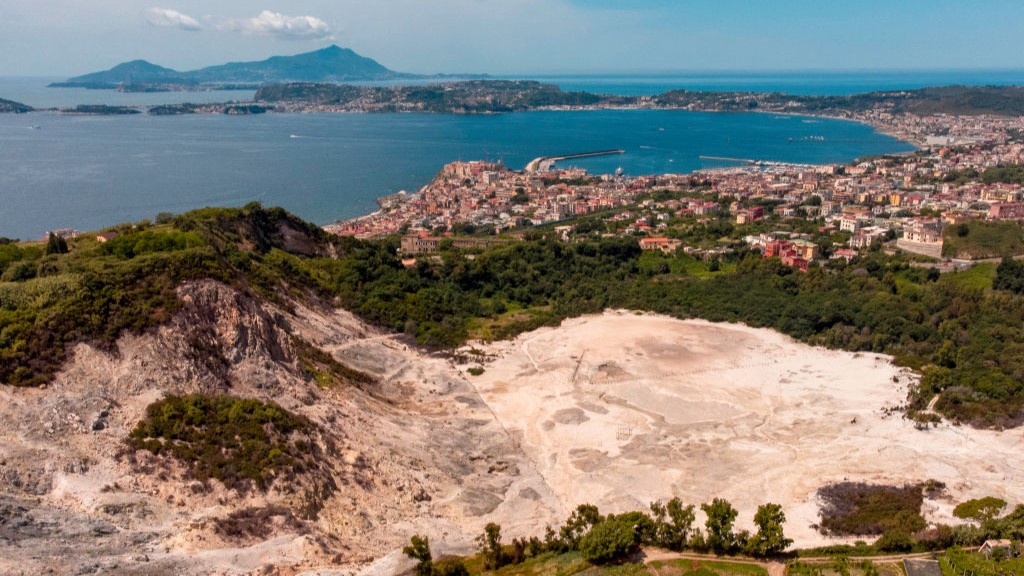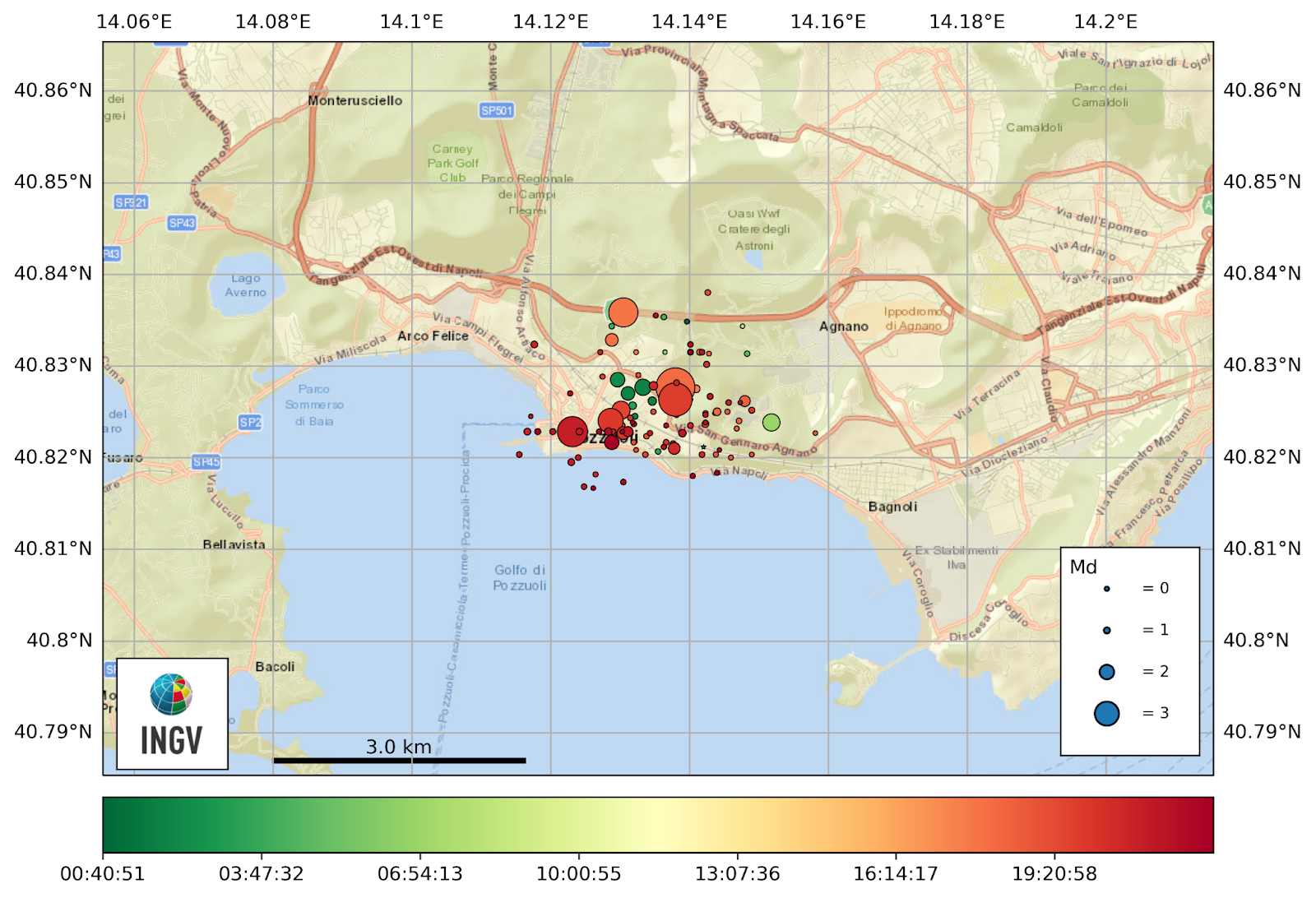Italy's Campi Flegrei volcano hit by 150 earthquakes in just 5 hours
Europe's awakening Campi Flegrei volcano experienced its biggest seismic swarm in 40 years, with 150 earthquakes rocking the region in southern Italy in the evening of May 20.

A wave of 150 earthquakes rocked the Campi Flegrei volcano near Naples last week — the biggest swarm in four decades.
The seismic swarm began May 20 just before 8 p.m. local time (2 p.m. ET), which included a magnitude 4.4 earthquake registered at a depth of 1.6 miles (2.5 kilometers) below the surface, experts wrote in a statement. The swarm lasted almost 5 hours, sparking panic among residents in nearby towns, but there were no reported injuries.
Thirty nine families were temporarily evacuated from their homes, and small tremors were still being felt around lunchtime May 21, Al Jazeera reported.
"This is the most powerful seismic swarm in the last 40 years," Mauro Antonio Di Vito, a volcanologist and director of Italy's National Institute of Geophysics and Volcanology (INGV) Vesuvius Observatory, told the news channel.
Campi Flegrei is Europe's largest active caldera, and the volcano is showing signs it could be creeping toward an eruption. A caldera is a type of crater that forms when the roof of a volcano collapses into the magma chamber as it empties during an eruption. Campi Flegrei last erupted in 1538; in the months prior to that blast, the ground swelled and rose by 66 feet (20 meters), then subsided again as the volcano ejected its stores of magma.
Related: Iceland volcano eruption throws spectacular 160-foot-high wall of lava toward Grindavík
The ground beneath Pozzuoli, a town located near the center of the caldera, has been rising for the past 20 years, Christopher Kilburn, a professor of volcanology and geophysical hazards at University College London in the U.K., told Live Science in an interview in December 2023. Irregular patterns of seismicity started to pick up about 10 years ago and have been increasing ever since, Kilburn said.
Sign up for the Live Science daily newsletter now
Get the world’s most fascinating discoveries delivered straight to your inbox.
Similar patterns of swelling and seismic activity, known as bradyseismic crises, occurred in the 1970s and 1980s. Between 1982 and 1984, the ground in the Campi Flegrei area rose at a rate of 3.5 inches (9 centimeters) per month, triggering more than 1,300 earthquakes per month, according to the INGV statement.

"Most of them were too small to be felt, but they started to get larger ones, which the population could feel and raised the alarm," Kilburn said. "And then everything stopped."
The ground did not subside back to pre-crisis levels in the 1970s and 1980s, meaning every bit of uplift stretches Earth's crust further. "Each crisis starts where the previous one finished," Kilburn said.
The ground is currently lifting at a rate of 0.8 inch (2 cm) per month, according to the statement, and there has been no change in this rate since last week's seismic swarm. Around 450 earthquakes have been recorded in the last month, compared with 1,252 quakes in April 2024 — most of which had a magnitude of less than 1, according to CNN. Temperatures and flows of carbon dioxide measured at the surface of Campi Flegrei also show no significant changes compared with recent months.
The reason for the swelling remains unclear. "There is some debate about whether that's really accumulation of gas, accumulation of magma, or the hydrothermal system is being disturbed," Kilburn said. Whatever the exact cause, "if you stretch something for long enough, it's going to break somewhere."
Following last week's seismic swarm, Gaetano Manfredi, the mayor of Naples, said the situation was "under control" and there was "no risk of eruption," Al Jazeera reported.
Experts told the news channel that the volcano is unlikely to erupt any time soon.

Sascha is a U.K.-based staff writer at Live Science. She holds a bachelor’s degree in biology from the University of Southampton in England and a master’s degree in science communication from Imperial College London. Her work has appeared in The Guardian and the health website Zoe. Besides writing, she enjoys playing tennis, bread-making and browsing second-hand shops for hidden gems.









